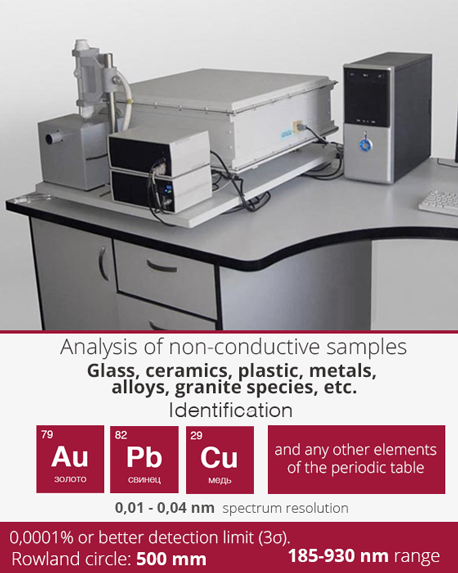Other users have also looked at: SPAS-01 - arc emission spectrometer for express analysis of various samples.
LAES
Availability: in stock
LAES, spark emission spectrometer with laser ablation, allows analyzing a wide range of samples. The specialty of this instrument consists in using a hybrid spectra excitation source. Ablation (sample coring and core vapor delivery to the analytical range) is performed by laser (so called laser spark).
This solution allows analyzing various samples, thus offering user features that are close to those of traditional laser spectrometers.
Spark excitation is induced by a condensed electrical spark which can be adjusted much more accurately compared to laser spark. This spectra excitation approach allows many fold improvement of the metrological performance of the instrument without prejudicing traditional laser flexibility.
This hybrid laser and spark emission spectrometer combines the advantages of laser, spark and arc spectrometers, yet is free of any of their disadvantages. Analytical reliability and repeatability of a spark spectrometer.
Versatile task range of an arc spectrometer and easy sample preparation and ability to analyze miniature and heterogeneous samples as a laser instrument.




